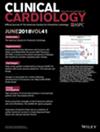Evaluation of the Presence of Native Valvular Disease in Patients With Atrial Fibrillation Using the EHRA (Evaluated Heartvalves, Rheumatic, or Artificial) Classification
Abstract
Background
Atrial fibrillation (AF) in association with native valvular heart disease (VHD) is very common and both entities perpetuate each other due to volume and pressure overload. In 2017, the new EHRA classification (Evaluated Heartvalves, Rheumatic or Artificial) was proposed: EHRA 1 (mechanical prostheses or moderate/severe mitral stenosis), EHRA 2 (native valvular involvement or biological prosthesis) and EHRA 3 (without valve disease). The objective was to analyze the clinical characteristics as well as adverse events in the follow-up of AF patients under oral anticoagulation classified according EHRA classification.
Methods
A multicenter retrospective observational descriptive study was designed and collected clinical, analytical, echocardiographic characteristics as well as adverse events in the follow-up of patients with AF who start oral anticoagulation.
Results
1.399 patients were included (mean age 75.3 ± 9.9 years; 659 (47.1%) male), of whom, 63% were classified as EHRA 2. After a median follow-up of 910 (IQR 730−1018) days, native EHRA 2 patients had higher event rates/patient-year as well as a higher total rate of adverse events such as cardiovascular mortality (5.5% vs. 1.1% event/patient-year; 8.7% vs. 1.1% p < 0.001) and major adverse cardiovascular events (MACE) (8.9% vs. 3.4% event/patient-year; 14.2% vs. 3.1% p < 0.001), compared with EHRA 3 patients. Multivariate logistic regression analysis showed that native EHRA 2 group was independently associated with all major adverse events.
Conclusion
In anticoagulated AF patients, those with native valve involvement (EHRA 2) have a worse prognosis than patients without valve involvement (EHRA 3). The presence of native valvular disease is shown as an independent risk factor for all-cause mortality, major bleeding, cardiovascular mortality, ACS, heart failure, and MACE.


 求助内容:
求助内容: 应助结果提醒方式:
应助结果提醒方式:


